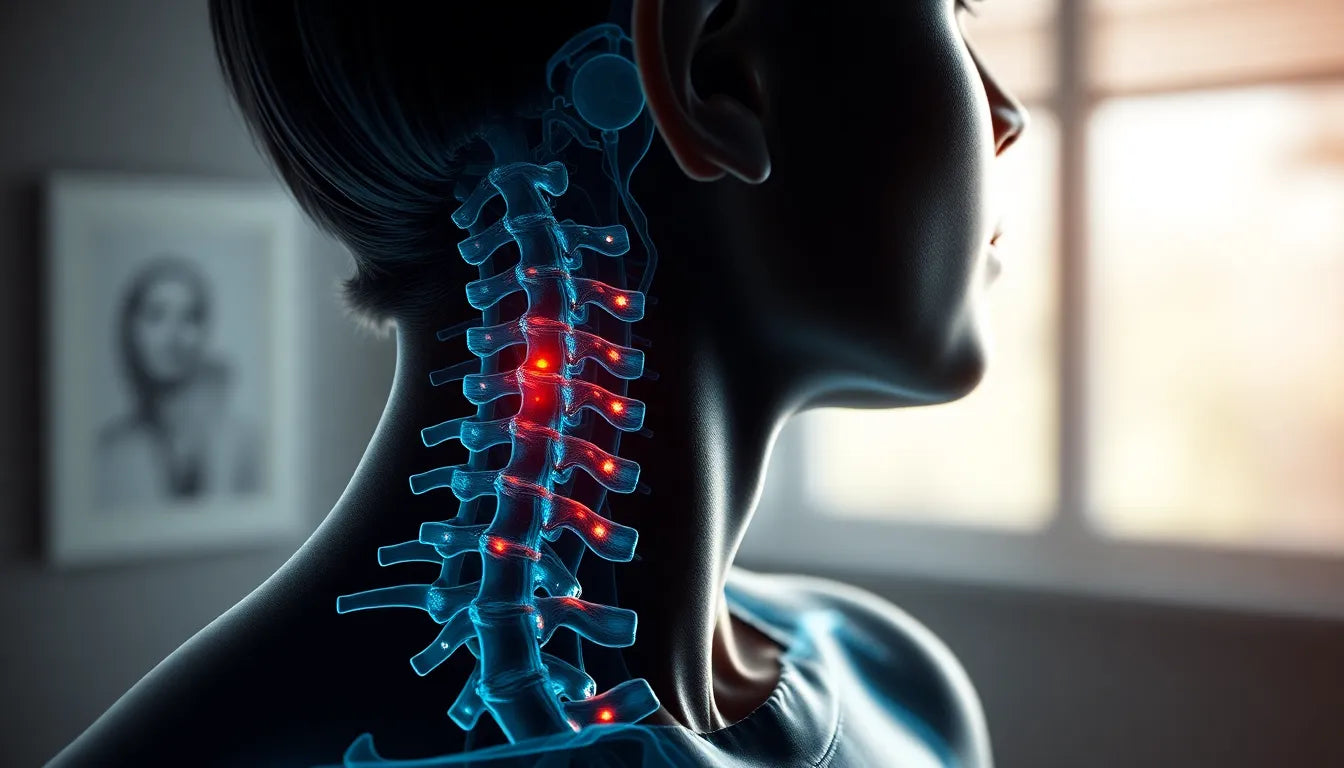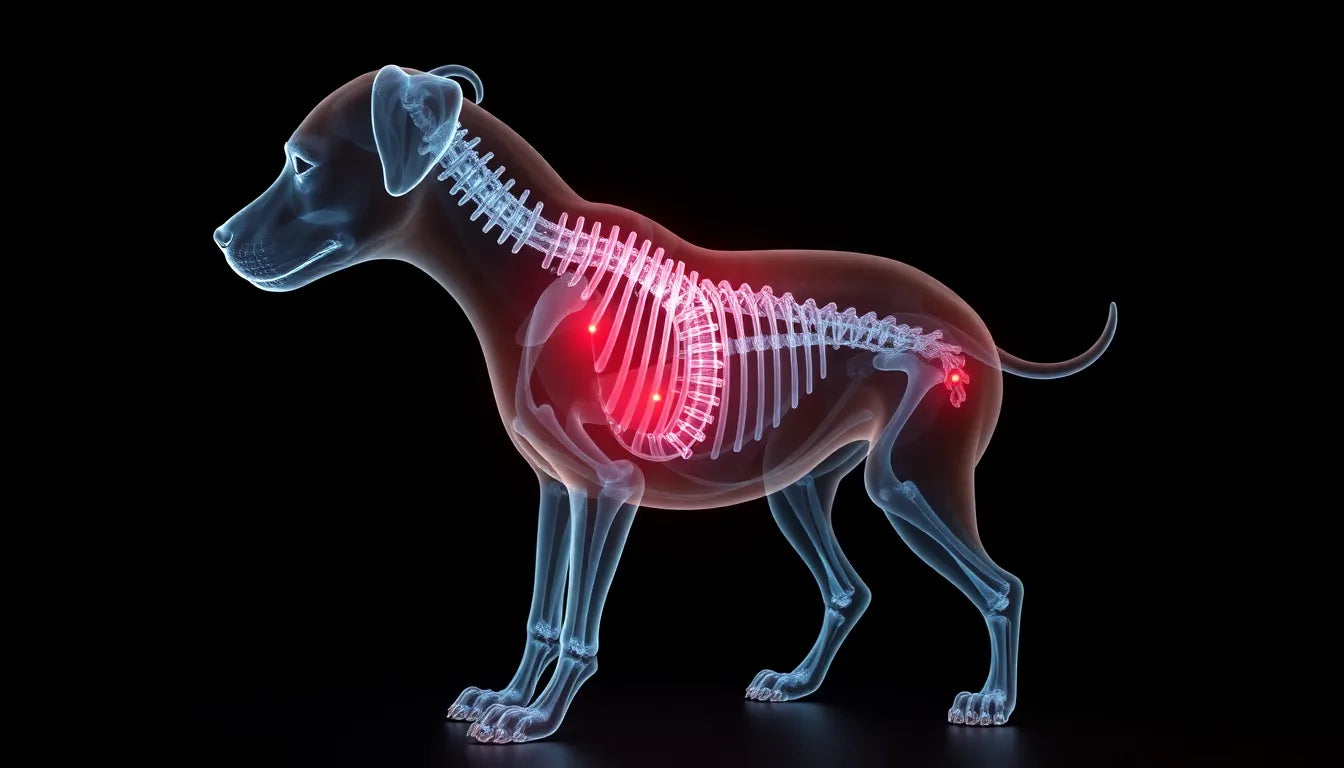Experiencing a herniated disc can significantly impact your daily life, affecting everything from simple movements to your overall comfort. A herniated disc occurs when the soft center of a spinal disc pushes through a crack in the tougher exterior casing. This condition can lead to symptoms such as pain, numbness, and tingling, which are often felt in the back, legs, or arms. Understanding what a herniated disc is and how it manifests is the first step toward managing its effects effectively.
Understanding herniated discs and their impact
A herniated disc is a common spinal condition that can be both painful and debilitating. It typically occurs due to age-related wear and tear, known as disc degeneration, but can also result from trauma or heavy lifting. The spine's discs act as cushions between the vertebrae, absorbing shocks from daily activities. When one of these discs herniates, the inner gel-like core protrudes, potentially irritating nearby nerves. This can lead to a range of symptoms, including sharp or dull pain, weakness, and even difficulty with mobility.
The prevalence of herniated discs is notable, especially among individuals aged 35 to 50, affecting both men and women. The impact on daily life can be significant, with many individuals experiencing limitations in movement and activity. Tasks that were once simple, such as bending over or lifting objects, can become challenging and painful. Therefore, understanding how to manage a herniated disc is crucial for maintaining quality of life.
The importance of effective management
Managing the symptoms of a herniated disc promptly and effectively is essential to prevent further complications and improve overall well-being. Without proper management, the condition can lead to chronic pain and reduced mobility, significantly affecting one's lifestyle and productivity. The goal of managing a herniated disc is to alleviate pain, improve function, and prevent further injury.
This blog post aims to provide a comprehensive guide on how to help a herniated disc through various treatment options. Whether you're seeking relief through nonsurgical methods or considering surgical interventions, understanding your options can empower you to make informed decisions about your health. From medication and physical therapy to alternative therapies and surgical procedures, there are multiple pathways to explore in the journey to recovery.
In the following sections, we will delve deeper into these treatment options, offering practical advice and insights to help you find relief and regain control over your life. By exploring both conservative and surgical approaches, you'll be better equipped to choose the right path for your specific needs and circumstances. Stay tuned as we uncover effective strategies to manage a herniated disc and enhance your quality of life.
Nonsurgical treatments for herniated discs
When it comes to managing a herniated disc, nonsurgical treatments are often the first line of defense. These approaches focus on alleviating pain, reducing inflammation, and improving mobility without the need for invasive procedures.
Medication for pain relief
Over-the-counter medications like ibuprofen and acetaminophen are commonly recommended to help manage the pain and inflammation associated with a herniated disc. These medications work by blocking the production of certain chemicals in the body that trigger pain and swelling. For more severe cases, healthcare providers may prescribe stronger medications, such as muscle relaxants or opioids, to provide additional relief. It's important to use these medications under the guidance of a healthcare professional to avoid potential side effects and dependencies.
Physical therapy and exercise
Physical therapy plays a crucial role in the recovery process for those with a herniated disc. A tailored program of guided exercises and stretching routines can significantly reduce symptoms and prevent future recurrences. Physical therapists design specific exercises to strengthen the muscles around the spine, improve flexibility, and enhance overall posture. By doing so, they help alleviate pressure on the affected disc and nerves, promoting healing and reducing pain.
Steroid injections for inflammation
When oral medications and physical therapy do not provide sufficient relief, epidural corticosteroid injections may be considered. These injections deliver powerful anti-inflammatory medication directly to the area around the herniated disc, helping to decrease swelling and alleviate pain. They are typically used as a short-term solution to manage acute symptoms and allow patients to engage more effectively in physical therapy and rehabilitation.
Exploring alternative therapies
In addition to conventional treatments, alternative therapies can offer additional relief for some individuals. Acupuncture, for instance, has gained popularity as a complementary approach to pain management. By stimulating specific points on the body, acupuncture is believed to enhance blood flow and trigger the release of natural pain-relieving chemicals, such as endorphins. Other methods, including pelvic traction, massage, ice/heat therapy, ultrasound, and electrical stimulation, can also be part of a comprehensive conservative care plan. These therapies aim to reduce muscle tension, improve circulation, and promote healing.
Surgical treatments: when to consider surgery
While most individuals find relief through nonsurgical methods, there are cases where surgery becomes necessary. Surgery is typically considered when symptoms persist beyond 4-6 weeks despite conservative treatment or when severe neurological symptoms, such as loss of bladder or bowel control, occur.
Types of surgical procedures
Several surgical options are available to address a herniated disc, each with its own set of benefits and considerations:
- Discectomy: This procedure involves removing the herniated portion of the disc to relieve pressure on the nerves. It can be performed using open or minimally invasive techniques, depending on the case's complexity.
- Laminotomy/laminectomy: By removing a portion of the vertebral bone (lamina), surgeons can access the herniated disc more easily and relieve nerve pressure.
- Spinal fusion: In cases where spinal stability is a concern, adjacent vertebrae may be fused to provide additional support and prevent further disc herniation.
- Artificial disc replacement: For eligible patients, this procedure involves replacing the damaged disc with a synthetic one, aiming to maintain spinal flexibility and function.
Choosing the right surgical approach depends on various factors, including the location and severity of the herniation, the patient's overall health, and their specific symptoms. Consulting with a spine specialist can help determine the most appropriate course of action.
Overall, understanding the range of treatment options available for a herniated disc can empower individuals to make informed decisions about their care. Whether opting for nonsurgical methods or considering surgical intervention, the goal remains the same: to alleviate pain, restore function, and enhance quality of life.
Complementary approaches to manage a herniated disc
In addition to traditional medical treatments, complementary approaches can play a significant role in managing a herniated disc. These methods focus on holistic care and lifestyle changes that can enhance recovery and improve overall well-being.
Chiropractic care
Chiropractic care is a popular alternative treatment for herniated discs. Chiropractors use manual manipulation to adjust the spine, aiming to relieve pressure on the affected disc and improve spinal alignment. It's essential to seek care from a qualified and experienced chiropractor to ensure safe and effective treatment. While some patients report significant relief from chiropractic adjustments, it's crucial to consult with your healthcare provider to determine if this approach is suitable for your specific condition.
Weight management
Maintaining a healthy weight is crucial for individuals with a herniated disc. Excess weight can place additional stress on the spine, exacerbating symptoms and hindering recovery. By adopting a balanced diet and engaging in regular physical activity, individuals can reduce spinal stress and improve their overall health. Weight loss not only alleviates pressure on the spine but also enhances mobility and reduces the risk of further disc herniation.
Holistic care
A holistic approach to managing a herniated disc involves integrating various therapies and lifestyle changes to address both the physical and emotional aspects of pain. Techniques such as yoga, meditation, and mindfulness can help manage stress and promote relaxation, which is beneficial for pain management. Additionally, incorporating ergonomic adjustments in daily activities, such as using supportive seating or practicing proper lifting techniques, can significantly reduce strain on the spine and aid in recovery.
Concluding thoughts on managing a herniated disc
Effectively managing a herniated disc requires a personalized treatment plan tailored to the individual's specific needs and circumstances. It's essential to consult with healthcare professionals to explore the most appropriate options, whether they involve nonsurgical treatments, surgical interventions, or complementary approaches. By taking a proactive approach to management, individuals can alleviate pain, restore function, and improve their quality of life.
Frequently Asked Questions
What causes a herniated disc?
A herniated disc can result from various factors, including age-related wear and tear, sudden injury, or repetitive stress on the spine. As we age, the discs lose water content, becoming less flexible and more prone to tearing or rupturing with even minor strain or twist.
How long does it take to recover from a herniated disc?
Recovery time varies depending on the severity of the herniation and the treatment approach. Nonsurgical treatments may lead to symptom improvement within a few weeks to a few months. Surgical recovery can take longer, often several months, with full recovery depending on the individual's health and adherence to rehabilitation protocols.
Can lifestyle changes help manage a herniated disc?
Yes, lifestyle changes can significantly impact the management of a herniated disc. Incorporating regular exercise, maintaining proper posture, and using ergonomic aids can help alleviate symptoms and prevent further injury. Weight management and stress reduction techniques also play a vital role in overall recovery and well-being.
When should I consider surgery for a herniated disc?
Surgery is typically considered when symptoms persist beyond 4-6 weeks despite conservative treatment, or if severe neurological symptoms, such as loss of bladder or bowel control, occur. A spine specialist can help determine the necessity and timing of surgical intervention based on individual conditions.
Are there any long-term effects of a herniated disc?
If left untreated, a herniated disc can lead to chronic pain and mobility issues. However, with proper management and treatment, many individuals can achieve significant relief and prevent long-term complications. It's essential to address symptoms early and adhere to a comprehensive treatment plan to minimize potential long-term effects.


















